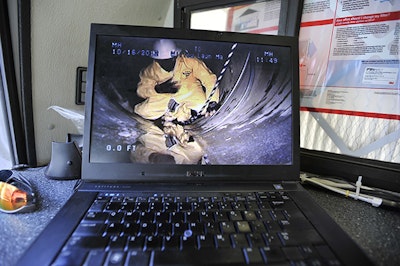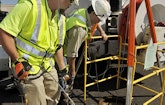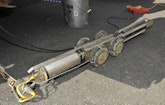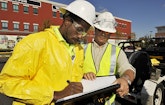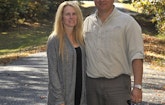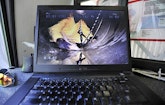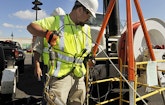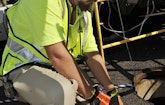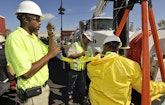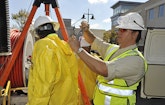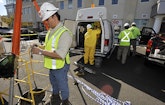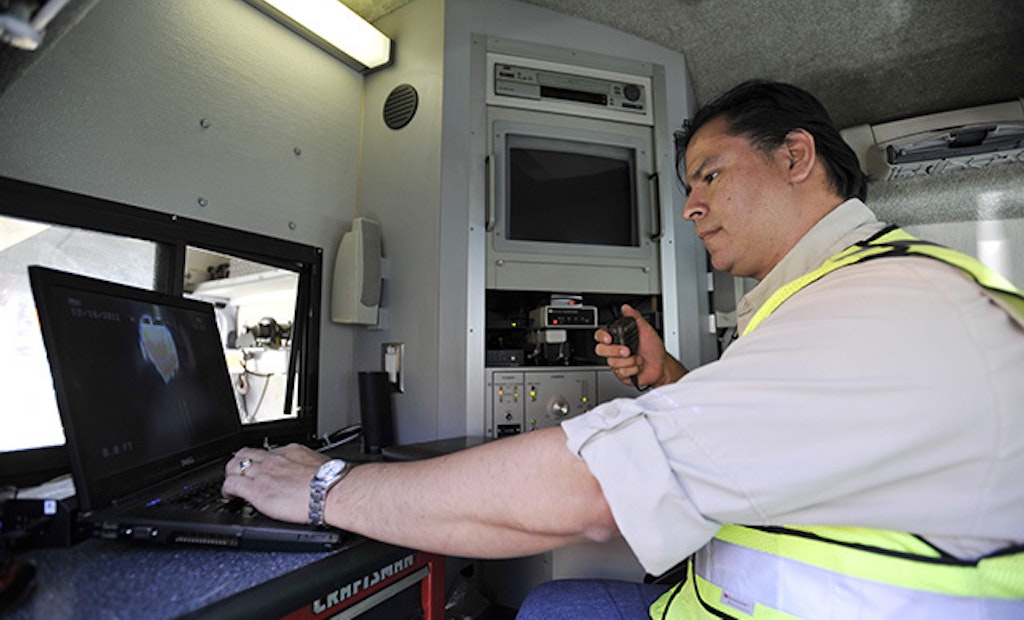
Interested in Cleaning?
Get Cleaning articles, news and videos right in your inbox! Sign up now.
Cleaning + Get AlertsLike a phoenix rising from the ashes to soar once again, Environmental Pipe Cleaning of Richmond, Va., has reorganized, rebuilt, rebranded, repositioned and reinvented itself on more than one occasion. The firm, established by Harold Hawes in 1966, has seen more than its share of changes and challenges but all of it has created a model for infrastructure rehabilitation and maintenance services that make the company a sought-after vendor for such well-known clients as Arlington National Cemetery, The Smithsonian Institute, the Federal Reserve Bank, and many other important governmental agencies.
Mindset, or more simply put, a major attitude adjustment in regard to how business should be done and how clients should be treated, has allowed the small family business to become one of the capitol's premier infrastructure problem solvers.
Breaking the mold
When Harold Hawes' daughter Samantha was a new master plumber training graduate, he offered her a proposition to take over the business and be an entrepreneur in her chosen field of study. The year was 1990, and although the number of females entering the plumbing and sewer maintenance field was on the rise, the industry was definitely still a "man's world" and considered no place for a woman, especially a petite, young, fresh-out-of-technical-college person like Samantha. Never one to back down from a challenge, she took her father up on the offer but had to deal with a lot of pushback from the crew. During the early days, Samantha sought her father's advice, but eventually she knew if this situation was going to work and the business prosper, there would need to be some big changes.
"Samantha made it clear that she was going to run a tight ship," relates Dave Hawes, Samantha's spouse and co-owner of Environmental Pipe Cleaning. "She wasn't going to tolerate any drugs, unprofessional appearance or rudeness. She wanted to erase the stereotype image of the sloppy plumber working under the sink from the company and change how the customer would perceive and remember us."
Samantha initiated mandatory drug testing, resulting in the loss of many former employees.
She was forced to hit reset. She reorganized and rebuilt, and in the process, rebranded and repositioned the firm in the market. Samantha saw the industry from a different perspective, a woman's perspective, relating to her new hires how clients felt when they showed up at their homes or businesses; how their appearance, attitude and demeanor made them feel; and how that client's perception could just as easily lead to more business or destroy the firm's hard work and reputation. By changing the approach and attitude toward clients, the technicians would become one of the most powerful advertising and marketing tools the company possessed.
Positioned for growth
By 1995, Environmental Pipe Cleaning was ready to take the business to the next level. The firm began to see great opportunities in the area of pipeline rehabilitation and recruited Dave Hawes to help expand and manage the business. Dave was new to the industry and learned quickly that in order to achieve the goals Samantha had set out, he needed to get out into the field to see how the crews operated and exactly what was involved on a day-to-day basis.
"It was a real eye opener," Hawes says. "I had the opportunity to see a situation not only from estimating and profitability for the company but from the service technician's view and the challenges they faced in making sure the repair was a success, and, most importantly, through the client's eyes as they were facing the potential disruption or modification of their property."
As Hawes spent more time in the field, he saw that clients were keen to be offered less invasive alternatives to repair their infrastructure. CIPP and pipe bursting offered great potential but as in the past, some of the technicians resisted management's plans.
Samantha again faced the challenge of having to reorganize and rebuild if the current team wasn't willing to adapt their mindset. The team was given the choice of learning new skills and being team players or moving on. Many elected to leave, and a program to recruit and train new technicians began. The new hires brought great promise to the firm and the team appeared to be one big happy family with many crew members developing friendships and socializing outside of work. But the "family-like" team eventually disintegrated as outside problems began to infiltrate the workplace and several crew members were caught working with office personnel to hide funds collected on certain project transactions. When the shortfalls were discovered, Samantha and Dave had to wipe the slate clean and start over again.
Although many business owners facing this many challenges and forced restarts would throw in the towel, Dave and Samantha saw it as another lesson learned and a reason to try again. Harold came on board for a while to assist Dave in coming up to speed on some of the more technical aspects of the business and troubleshooting in the field as the company was now down to just Dave and one helper.
"Harold taught me to never, never claim you can do something you can't," Hawes says. "Always deliver what you promise because if you do, people will trust you and call you back. If you don't deliver, clients lose all confidence in you and will take their business elsewhere. This was strong advice and something that has always stuck with me."
So when Environmental Pipe Cleaning was given an opportunity to perform maintenance and rehabilitation work at the Arlington National Cemetery, Hawes knew he needed technical expertise that his existing crew members didn't possess. Not wanting to lose out on what could potentially be an excellent, long-term customer, Hawes set out to find the personnel he needed in an out-of-the-box way.
The project involved the cleaning and lining of several drain lines and would require a technician with experience operating a combination truck. One day Hawes approached some municipal combination truck operators on their lunch break. He made it clear he wasn't asking them to leave their job, but asked if they knew of anyone who was looking for work who had experience operating this particular piece of equipment. They had just the referral for Hawes in Erik Cox, the former operator of their truck who had just left the municipality. The former municipal operator was delighted with the prospect and has now been with the firm for over seven years.
Never say "never"
Environmental Pipe Cleaning's mindset and approach has earned it a reputation for exceptional customer service, attention to detail, and the unique ability to handle sensitive projects that require a high degree of delicacy, care and preparation.
Working in an emotionally sensitive area like Arlington National Cemetery takes great planning and understanding. When rehabilitating a 400-foot-long, 48-inch storm drain, timing was critical. Bypass pumps had to be set up on lines leading into the run, and this equipment by its nature can be quite loud.
The cemetery provided the crew with a list of the funerals that would be held each day during the project, where they would be held, and which areas the processions to the interment sites would travel through. On average, 24 to 27 funerals are held each day. For smaller projects and routine line cleaning, the crews will shut down equipment one hour before a funeral begins and make their presence discreet. They will wait for a minimum of 30 minutes after the service is complete to allow any lingering attendees to leave.
On the storm drain project, the nature of CIPP lining and the inability to shut down equipment once the relining process has begun required special arrangements allowing access to the grounds over the weekend when no services are conducted. The cemetery worked closely with Hawes and his crew to make sure the rehabilitation work could be completed successfully without disruption to the grounds or visitors.
"When it comes to the special landmarks and agencies in our nation's capital, you really need to push the envelope of trenchless technology. It means not backing down on a challenge and finding a way to make it work for the client and for your crew," says Hawes.
The Smithsonian Institute pushed Hawes and his team to extremes when they were asked to rehabilitate a series of roof leaders in the Natural History Museum. The ideal rehabilitation method was CIPP, but access and finding the right equipment tested the crew's resolve. In 2010, they rehabilitated one roof line for the museum in an unfinished crawl space attic utilizing a drum air inversion machine. Due to its size, the equipment had to be assembled, disassembled and reassembled several times as it progressed through the length of the line.
"It wasn't the right piece of equipment. We had several lining contractors come and take a look at the project and they all shook their heads and told us it couldn't be done, but we weren't going to give up looking for a solution," Hawes relates.
After almost of year of searching, Hawes stumbled upon a small launching system designed for CIPP lining. The Quick Shot Launcher sold by PrimeLine Products proved to be just what was needed for the Smithsonian project. Andy Rothenberg of PrimeLine Products trained the crew, and after experimenting and performing some test runs, they were very excited about what the equipment could bring to the project.
Aside from having the right equipment, the project also required careful planning due to high temperatures from adjacent steam pipes in the attic's crawl space and nearby artifact storage rooms. Protective plastic tarps were hung in all work areas to completely enclose the work area and eliminate the potential of any resin or construction debris coming into contact with the artifacts.
On a few occasions, due to the intense ambient temperatures of the work area and small spaces that slowed the crew's movement, the resin began to cure too soon and the liner became impossible to work with. The crews had to sacrifice the liner and start over. Extra hands were then brought onboard to help keep the deployment of the wetted-out liner moving as rapidly as possible. The planning and staging had to be precise to limit the amount of waste and disruption to the facility. Once the right resin, liner and deployment formula was in place, Hawes and his team (Gary Cox, David Howe and Ron Wharton) were able to perform the rehabilitations systematically and successfully.
"When the final one of the 20 lines in the most difficult section went in, it was a great feeling. We had been waiting to exhale and could finally relax. However, because we did so well, the Institute decided to add onto the project and perform rehabilitation in another section of the museum. Our excitement over the added business was a bit muffled but what we learned from the initial project was a great benefit and made the second project that much easier for the crews," says Hawes.
When you love it, it shows
When the recent recession brought economic challenges to Samantha and Dave's door, they began to rethink their future and the fact that another reinvention, reposition or relaunch may not be in the cards. They began to look at other avenues to create revenue, even taking the famous "Rich Dad, Poor Dad" course. The instructor told them about a book entitled, Who Moved My Cheese?, and they immediately picked up a copy and saw themselves as the characters, Hem and Haw, in this famous book.
"We were waiting for somebody to put things right again for us, like the cheese in the book, but it wasn't going to happen that way. We had to change our mindset if we and this business were going to survive," says Hawes.
And that's what they did. Samantha and Dave began a concentrated customer outreach program, reaching out to remind all their happy clients that they were still there and available. They kept a positive attitude even when they were told no, and eventually their positive energy and determination paid off. The phones began to ring, the projects started coming in again and it has been nonstop since.
"You have to love what you do in order to succeed. If not, you won't prosper no matter what you do. We've shared this philosophy with our employees, and it shows," says Hawes. "We can't be at every job and our employees take pride in what they do and make it happen for us. They share our mindset in how this business should be done and giving our clients the level of service that they've come to expect from our firm. It hasn't always been easy, but the right attitude and perspective has seen us through and we're confident it always will."
